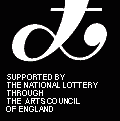CONCLUSION AND FOLLOW-UP
The implications for your writing.
By now you should be able to
» recognise the principal characteristics of poetic language,
» distinguish poetic language from academic language
» explain the significance of "Show, Don’t Tell"
» re-draft the language of your writing sensitively, according to good stylistic principles.
We shall now try to apply your learning to redrafting your own poems. Look again at your own writing, bearing in mind the principles you have learned, which I will crudely summarise in the following broad-brush advice:
» Abstractions are dangerous to a poem. Any abstract noun in your poem should be like a flashing red light. Two of them is horribly excessive.
» Use close observation, unusual detail and all the senses to bring the scene vividly to life. The readers should know where and when the poem is set, and feel as though they are present. They should be able to smell it or hear it or feel it.
» Use adjectives sparingly. The haiku is too small for you to describe everything fully. Choose the right detail, and do not otherwise overcrowd it with description.
» It is often good advice for beginning writers to cut the ending. One is apt to sum up, make judgements, draw conclusions, or repeat oneself at the end of a poem. Trust the image. Let the poem speak for itself. Do not sum up for it.
» You have many alternatives to choose from, for each word that you write. It is great to be clever and do unusual things with the language, but do not be flashy. If your reader is marvelling at the words instead of marvelling at the subject, then you are undermining your own poem by showing off, which is not in the spirit of Master Basho.
» You have alternative sequences to choose from too: see if it works better with the first and third lines swapped, or the second line first. You can control the surprises, and the emotional impact of the image.
You can control your language. You have choices.
Haiku poems are very suitable for learning how to take control, because the form is small, shapely, and clearly focused on creating a sense-impression of a (usually) natural scene. May your writing flourish!
The Poems
"Contending…" is by Kito, translated by Lucien Stryk and Takashi Ikemoto, from The Penguin Book of Zen Poetry 1981
"Telescope …" is by Issa, translated by Lucien Stryk, from Of Pen and Ink and Paper Scraps, Lucien Stryk, Swallow Press, 1989
"Swinging homeward…" is by Hirai Sachiko, translated by George Marsh, from My Green Wife, Waning Moon Press, 1997
"On the dewy grass…" is by Dimitar Stefanov, from My Green Wife, Waning Moon Press, 1997
"Wasps nest…" and "Walking at night…" are by Cicely Hill, from The Earth Drawn Inwards, Waning Moon Press, 1997
"Wintry sun …" is by Michael Gunton, from Echoes in the Heart, Waning Moon Press, 1997.
"Walking the snow crust…" is by Anita Virgil.
The lines of "Crow follows crow" are taken from bluegrey by Martin Lucas, Hub Editions, 1994
"Summer’s end nears…" is by George Marsh, from Salting the Air, Waning Moon Press, 1997
Copyright: Please note that you are welcome to photocopy the source poems here for classroom use, but you may not re-publish copyright poems in any form without the express permission of the author or original publisher.
Downloading the Source MaterialThe poems have been extracted and are available to download as a Microsoft Word document.
If this doesn't work, we have also extracted the poems and placed them on a separate web page which can be printed directly from the page or saved using the 'file' menu.
Press here for the web page
END OF LESSON


